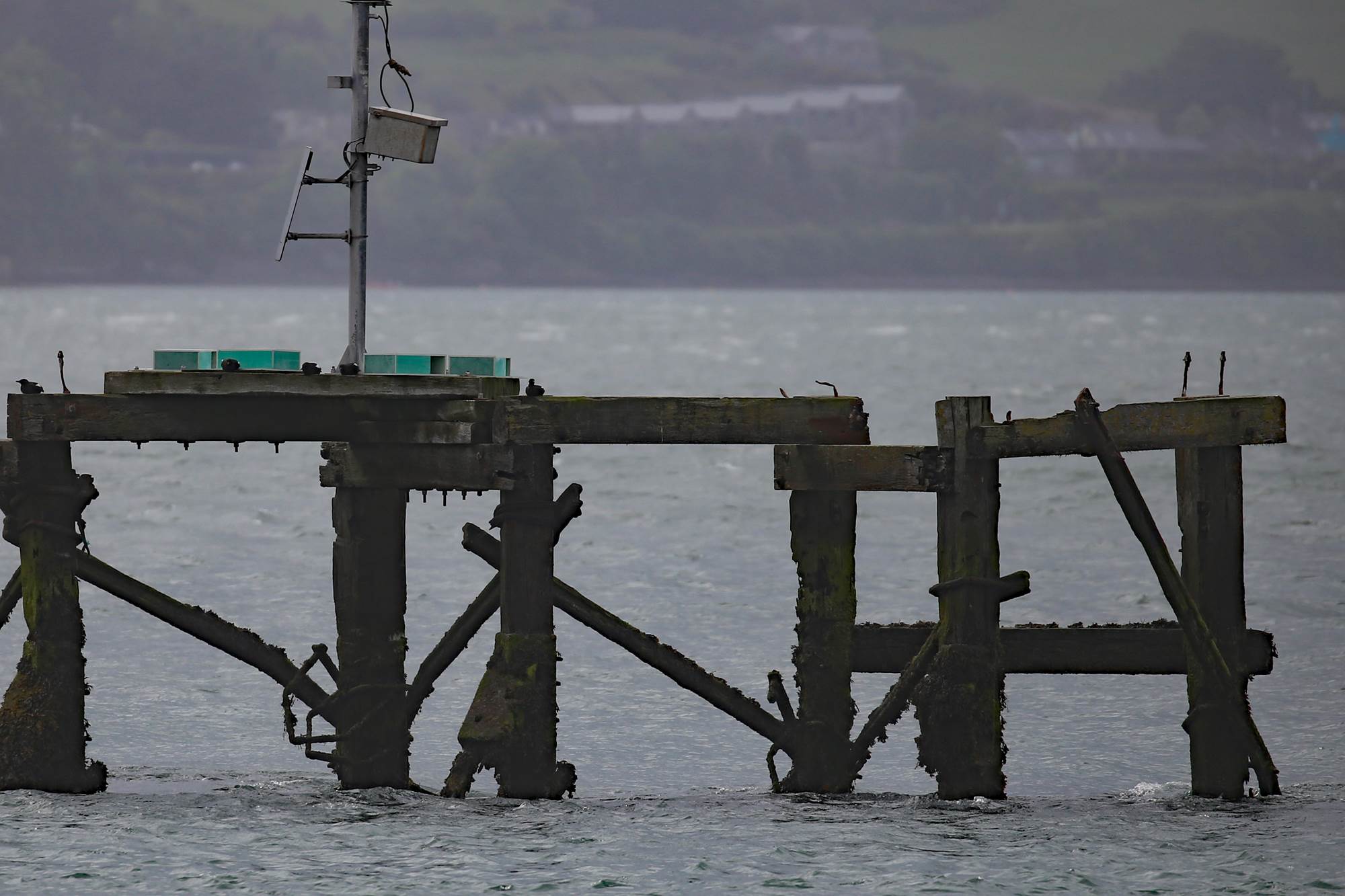Black Guillemots
Black Guillemots Cepphus grylle (known as tysties in Scotland) are a member of the Auk family. They are about the size of a large pigeon and look not unlike penguins (weight 300 – 450 g, 52 – 58 cm in length), an example of convergent evolution. Black guillemots can also be very confiding during spring and summer when they are breeding. Because of this, and the fact that during the spring and summer they often nest in small colonies in ports and harbours, they are vulnerable to significant disturbance, often unwitting, from members of the public.
They are also vulnerable to interference in their breeding sites arising from improvements and remedial works to quay walls, changes in harbour activities, changes in boat mooring configurations and other factors.
There are three nesting sites in County Louth, at Port oriel, at Gyles Quay and at Greenore Port.
Black guillemots generally spend the winter months at sea fishing for small fish and crustaceans on the seabed, usually pursuing them using their wings for propulsion. They can dive to depths of at least 50 metres (Diving Depths of Four Alcids John F. Piatt and David N. Nettleship The Auk Vol. 102, No. 2 (Apr., 1985))and for as long as 90 seconds (personal observation). In the spring they come to the shore where they nest. Nesting sites are typically gaps between boulders or cavities along the shore, however, black guillemots will select harbours when cavities or crevices in the quay walls provide the kind of nesting site that meets their requirements. This tendency to choose man-made structures for nesting is apparently increasing (source: ). It may also be that other advantages accrue from nesting in harbour areas such as protection from some predators that may avoid people (eg otter, mink), availability of food to their prey species derived from fishing by-catch or other waste, and calm waters protected by quay walls, breakwaters and the like reducing the possibility of nesting cavity inundation. However this may to some extent be offset by disturbance by humans and human associated predators such as rats and cats.
Black guillemots are mainly colonial breeders forming colonies of a few birds up to a few hundred (source). The birds usually gather at nesting sites at the end of March and by mid-April have paired and selected their nesting cavity. During much of this time the birds are incredibly tame and display in the vicinity of their nest holes, quite impervious to passing people. Two eggs are generally laid in mid-May, hatch in mid-June and juvenile birds fledge in late July. This may vary by a week or two either way depending on conditions in the particular season (source). Fledging involves the young bird flying from the nesting cavity directly into the water. During August the birds moult into their winter plumage and return to the open sea. Sometimes, particularly during winter storms they return to their nesting site (source).Therefore the main requirements of black guillemots are:
suitable marine environment for fishing (ideally deep water with rocky benthos and plentiful fish/crustaceans)
nesting cavities of the right depth and breath and the right height above the sea and below the quay wall to make them inaccessible to predators such as rats
quay wall with reasonably low levels of activity (e.g. minimal surface oil spillage) and ideally in lee of prevailing wind and wave
suitable prey for feeding nestlings available at the right time of year (eg sand eels, butterfish)
Black Guillemots usually fledge one or two young. Once the juvenile birds are fledged they are pretty much on their own (unlike closely related razorbills and guillemots, who nurture juvenile birds at sea for several months). They are relatively long-lived, often reaching 20 years (max recorded age 23 years 22 days) however attrition in the first winter may be very high – up to 80 to 90%. (Greenwood British Birds 2010, Greenwood pers comm). Like many other long lived species with low breeding productivity, they can tolerate a few bad breeding years, but if populations drop below a certain level, it is hard for colonies to re-establish.
The Louth nature Trust has been involved in their conservation at each of the main sites:
Greenore Port
We installed wooden (marine ply) nesting boxes on the breakwater in 2006 - 10, which were successful for many years until they were destroyed by a storm in 2021. As a result in 2022 we resigned, commissioned and installed new more robust boxes made of MgO plates.

Nest boxes on the breakwater at Greenore port - photo BM
Gyles Quay
In 2008 we installed nesting pipes in the quay wall following its collapse after a major storm. These have been maintained ever since.
Port Oriel
In 2009 we installed cavities by drilling holes into the new quay wall following refurbishments of the existing quay wall. We have maintained these ever since.

